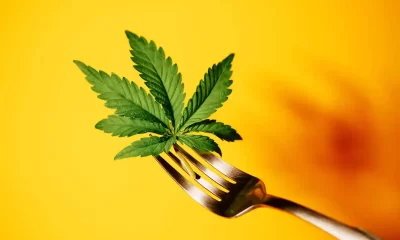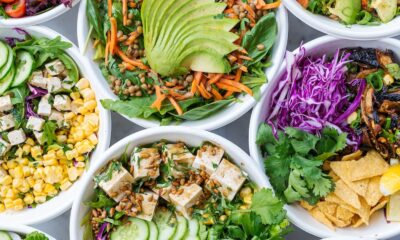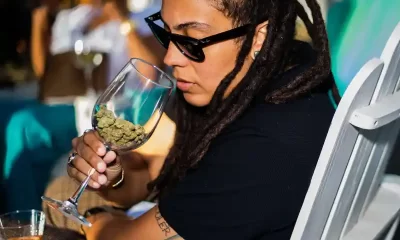Blogs
Why 2023 Will Be the Year for Growing Your Own Food and Medicine – Plants to Start Growing Now!

Why 2023 will be the year for growing your own Food and Medicine – Here’s some plants you should consider growing!
While I generally tend to be a very optimistic person, the way things have been going in 2022 has me perplexed.
As of writing this article, it has become blatantly obvious the level of incompetence of our global leadership actually addressing the real issues people have been facing – and rather, quite dogmatically cling to their partisan narratives
One of the more distressing trends I have seen is the direct assault on food supply for the sake of the “climate”.
Don’t get me wrong, I believe the earth should have legally-binding rights and global societies should always strive towards finding a homeostatic balance between earth and our desires for expansion.
However, the overall “climate narrative” that is being sold to us by Private Jet Setting millionaire-billionaires and special interest groups is NOT for the betterment of the planet.
While this article isn’t about poking holes in the “Climate Disaster Narrative” I simply look at the measures being passed by climate crusaders in countries like Shri Lanka and the Netherlands – and how it is directly impacting everything we hold dear.
All in the name of “saving the planet!”
Rules for Thee, not for Me!
Interestingly though, the mega corporations that are “part of the fold” hardly have to make any significant changes in their operations. We don’t see the wealthy give up their private jets or large mansions, yet the rest of us have to ride-share, reduce out consumption habits, track our carbon, report to the government, etc…otherwise we’re DOOMED!
While it’s true that we – as a society – need to be mindful of our consumption choices, but before we limit nitrogen levels in farmlands, perhaps we could address the fact that we throw out 50% of all of the food that we produce.
Publications like NPR would remind you that “It starts with you!”, shielding corporate interests from ever taking any real responsibility in the practices they fermented in the collective minds of the consumers.

Decades of aggressive and suggestive advertisement, selling of a consumerist dream, promoting the “throw away culture” – only to flip it on the consumers and call them Bioterrorists for doing exactly what they have been engineered to do!
Why don’t Coca Cola and all major soft drink companies invest in mass desalination plants all over the world? Doing this would solve many of humanity’s problems, they have the money – and they are part of the problem in mass consumption of water – upsetting the ecosystem.
In a way, they are ethically obliged to do this small simple act of building facilities to extract unsalted water from the oceans – which according to the Climate Disaster promoters are rising in sea levels. All the more reason to extract it and send it to our waterways, places where people are suffering water shortages.
These are all practical solutions – things that these “Climate Engineers” would never dare talk about. Hell, stopping the proliferation of war would have a far more significant impact in favor of the planet than everyone going vegan – just saying.
Is there Hope?
So far, for every push for totalitarianism, there has been a push back by free-independent thinkers and doers. In the current assault on our global food production, where we are seeing a dramatic increase in costs associated to all the lock downs, wars, and embargos the current global administrations decided were the “best way forward” through the shitshow they engineered over the past few years.
If you have been paying attention, you’d understand that we live as a global society. Shri Lanka is the canary in the coalmine…or the ferret in the Tesla factory…or something like that.
Shri Lanka had too much debt – with 30%+ held by BlackRock – and with strict environmental policies being enforced so they didn’t lose their credit – forced the government to buy out farms, and reduce nitrogen significantly – which led to a food production collapse.
Now with no gas, no food, and everything coming to a dismal standstill – the people rose up against their leadership – and now, there is no law there…it’s pure unorganized chaos. Anarchy driven by need and chaos.
Fortunately, as we saw Truckers stand up against Covid Regulations all over the world, we’re seeing the Farmers of the world unite to stand up against these global measures.
Irrespective of where you sit on the climate debate, you have to acknowledge that “not eating food” will be a bad move for humanity as a whole. This will breed a highly volatile situation, and typically it’s here where dictators and authoritarians promise to “bring order” by ethnically cleansing the opposition.
Don’t believe me?
Read your history!
Which bring us to the true purpose of this article…
What Plants do you need to start growing at your home today in order to survive the coming manufactured food shortages?
I am a firm believer in fractal-societies, where the individual sits at the center of it all and through a principle of interdependence, we sustain each other. Stronger together than apart.
I could go into lengthy details about how to set this up in society, however I’m going to address the issue of food and medicine, and why self-sustainability is the way to ride out the coming storm.
Let’s begin with food:
Grow your Foods
I live in a highly urban area, but I converted my balcony and available spaces to food production. My kitchen has its own herb garden and the lights from the kitchen is more than enough to make it work. You can also grow food from scraps, like carrots, garlic, onion, etc.
According to a few Prepper Sites (the most prepared for a food shortage situation) the best foods to grow at home are;
- Beans (assorted)
- Corn
- Winter Squash
- Potatoes (can make vodka)
- Carrots
- Cabbage
- Kale
- Sweet Potatoes
- Garlic
- Herbs
All you need is some good soil, pots and you can start growing as soon as possible. It will take you a few months before you see any results, but if you start now, by this time next year you’d probably be able to completely sustain yourself from your garden.
If you’re into meat, etc – you can consider getting chickens that lay eggs daily, and can be another source of protein. Feed them hemp and some of the corn you’re growing and you’ll have awesome tasting chicken readily available. Of course, since you won’t be pumping them full of hormones, they will take longer to fatten up – but in a world where chicken could cost you $15-$20 per pound.
Don’t believe me? Check out this chart about the average cost per boneless chicken in the US…
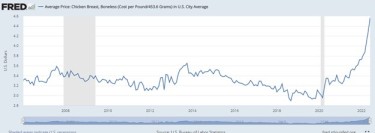
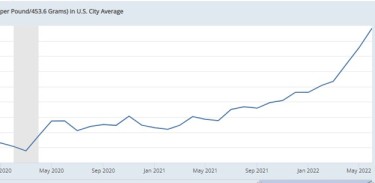
Perhaps we correct our ways and get things under control…but judging by the past few years…what’s your gut telling you?
Now, if food’s going to get expensive…you can damn well bet that so will medicine, which brings us to our next crop to grow…DRUGS!
Grow Your Medicine
I would see if there’s any crossover between your Medicine and Food production, that way you can reduce space consumption because there is a cost to sustain this configuration of living. However, that cost will be significantly lower than buying from a store.
If you want some more help in “Drug Gardening” – check out this Subreddit
Here’s the plants you’ll want to grow;
- Cannabis – Cannabis is a versatile crop and a powerful medicine. Apart from being able to consume the leaf and utilize the roots in salves or lotions, cannabis can also provide you with oil, which will help boost the immune system. You can make some RSO at home with no problem and would need to grow about 5-6 plants to sustain you and a few other people. Ideally, you’d want to get cyclical production set up – you’ll want to achieve a process of harvesting and moving the next crop into the vegetation stations. If this is not possible, one large crop to sustain you year round.
There are plenty of things you can do with cannabis, from smoking it, to drinking it in teas, anti inflammatory creams and lotions, oils, etc. This will keep you healthy and in optimal conditions for weathering any storm. - Aloevera – This is something you’ll want if you want to create topicals, but also for food, skin care, cloning plants, creating insecticides and much more.
- Lavender – Mix it with your cannabis, and you’ll understand why! But also, improves sleep, relieves migraines and pain, relieves indigestion, relaxing.
- Poppies – Poppies are abundant, easy to grow, and legal. They are also pretty as hell! Put some color into your garden and plant some poppies. You can make soothing teas to help diminish pains, etc…or do some extraction and make more potent forms of pain relief. Get papaver somniferum for the type of poppy to grow.
- Kratom – Once more, this can be a powerful narcotic and can help diminish pain significantly. While this can also be addictive, it can be a good alternative for people who want to wean off more harmful opioids.
- Psilocybin (and other mushrooms) – While psilocybin can be used to deal with depression, do spiritual journeys, or just to have a fun time. You should also consider getting into growing oyster mushrooms, these are fantastic sources of nutrition.
Collect some rain water while you’re at it…get some fish!
If you have the space, think about collecting rain water (even if they make it illegal) and get an aquaponics set up…this way you can incorporate more protein and use the aquaponics system to fertilize the garden.
But…but…it’s EXPENSIVE!
This is true, everything that I have described here won’t be cheap. It will cost time and money and will only give you returns after months.
You’ve got a couple of options here;
- Do it in phases – figure out what is most essential and start there. You don’t have to grow it all at once. Just begin setting up your areas, grow as you can and work towards your main goal of completely self sustainability.
- Upcycle shit! – if you’re creative, you can find a lot of stuff for free. You just have to go out into the world and find some garbage and repurpose it. Using things like Craig’s list, or Marketplace or any community service program – you can find a whole lot of tools, containers, etc. Old Mini-Fridges can grow 2-3 cannabis plants easily.
- Work in community – as I mentioned, I’m a big fan of “interdependence” – where people come together for the common good. In this case, if you can start talking to neighbors or even friends and share the workload, you all can invest into particular activities and share your results with the group. In fact, this strategy can work exceptionally well if you organize an entire street or cul-de-sac, sharing crop loads and coming together to exchange goods as needed.
Is any of this possible?
Yes – you just need to get organized, stop thinking you can’t and get started. It’s not easy getting people on the same frequency, but bit by bit – your results will inspire others. If you help them on their journey, you can build intermodal communities where everyone supports each other while food production is reduced all over the world.
In fact, prior to the 1950s, most people grew their food at home. It wasn’t until the introduction of the Super Market that people abandoned their home gardening for the comfort of depending on corporations. Now however, the corporations are blaming you for all environmental sins and instead wants to alter your diet to suit their needs.
There’s a reason Bill Gates is buying farmland, why the Dutch government wants to shut down farms, etc…but our ace up our sleeve is that technology has made it incredibly simple to grow at home again…so maybe, if you start today – you can ride out this wave like the champ you are.
I hope that this article inspired some of you to start unplugging from the system, to become the Renegades of Freedom for a society where we all watch out for each other.
Blogs
Border sales a boost for most marijuana retailers across US

Marijuana sales along state lines are key revenue generators for retail operators in the United States, and new insights suggest a similar business bump along international borders, particularly Mexico.
Data compiled by New York-based wholesale technology platform LeafLink – as well as information gathered from state agencies, quarterly reports and interviews with several cannabis companies – bear that out.
LeafLink analyzed hundreds of ZIP codes at the request of MJBizDaily and found strong links that when new recreational markets open, retailers near borders stock up on inventory significantly more than operators located elsewhere in a state.
Data from the past three years revealed wholesale marijuana products purchased by border stores jumped 140% after the launch of adult-use sales, while retailers located in more interior areas increased purchases by about 80%.
“The growth when a state launches adult-use sales at a border store in terms of purchasing activity is around double the growth of the remainder of the state,” LeafLink Strategy Analyst Ben Burstein told MJBizDaily.
Of course, numerous factors are at play – perhaps none more impactful than the marijuana policies of neighboring states.
That’s why Illinois retailers near Wisconsin, where marijuana possession is illegal, are still attracting Wisconsinites nearly four years after the launch of recreational sales.
There also are retail sales-tax implications, a big reason why St. Louis-areas operators are seeing an influx of shoppers from southern Illinois, where cannabis taxes are at least three times higher than in Missouri.
Meanwhile, border retail in New Mexico is boosting depressed economies along hundreds of miles of its shared borders, drawing stampedes of consumers from neighboring Texas and, more recently, cross-border buyers from Mexico.
Retail shakeup in the heartland
The February launch of adult-use sales in Missouri has caused ripple effects throughout the Midwest.
Missouri holds the rare distinction of bordering eight states, with only Illinois offering recreational marijuana sales.
Missouri’s 6% retail tax on recreational marijuana purchases is also among the lowest in the nation, drawing Illinois consumers across the Mississippi River in droves to buy much cheaper weed.
All in, cannabis sales taxes in neighboring Illinois eclipse 30%, second only to Washington state. And in Chicago, sales taxes can easily top 40%.
Demand is booming in western Missouri, too.
In April, Missouri retailers near the border of Kansas, where marijuana possession is also illegal, told MJBizDaily they were seeing foot traffic increase ninefold after expanding into recreational sales.
The rush of new customers, coupled with cultivation-capacity lags, has led to big spikes in wholesale flower prices and inventory shortages throughout the supply chain.
Retailers, for their part, are trying to keep pace.
To meet consumer demand, wholesale purchases per store in the Kansas City, Missouri, market increased from $97,000 in the quarter before the launch of recreational sales to $491,000 in the quarter after, a whopping 406% jump, according to LeafLink data.
In the St. Louis market, which borders southwestern Illinois, wholesale purchases per store increased nearly 57%, to $610,000, after adult-use sales began.
“The demand’s been bigger than anyone expected,” Burstein said.
A zero-sum game
In marijuana retail, particularly near state borders, it’s a zero-sum game.
The sales boom in the St. Louis market, which has more than 70 stores, has deflated business on the Illinois side of the border, where retailers have lost millions of dollars in sales since Missouri’s adult-use launch, according to quarterly reports and earnings calls.
Top executives at New York-based multistate operator Ascend Wellness Holdings, which has two shops near the Missouri border, cited revenue declines at its southern Illinois stores in recent earnings, saying it has led to suppressed margins that are expected to linger for much of the year.
Florida-based MSO Jushi Holdings, which also operates two Illinois stores near the Missouri border, reported an 8.8% year-over-year revenue decline to $66.4 million in its second quarter, partially attributing the slide to adult-use sales in Missouri.
In an Aug. 11 second-quarter earnings call, Jushi CEO James Cacioppo said total Illinois sales declined 20% from the first quarter and 40% year-over-year.
“I think we under-anticipated the pricing power initially out of the gate that retailers were going to have in Missouri,” Jushi Chief Strategy Director Trent Woloveck told MJBizDaily in an interview.
“The impact was a little bit greater than then we had thought due to that pricing for flower, vapes and infused products.”
In response, Jushi has implemented several initiatives, including adding new promotions and diversifying product SKUs (stock-keeping units) to ease the impact of declines sales in Illinois.
Northern exposure
Market dynamics in northern Illinois, particularly along the Wisconsin border, are a different story.
Wisconsin is among 10 states without a medical or recreational marijuana program.
Illinois counties bordering Wisconsin – including Lake, McHenry, Jo Daviess and Winnebago – accounted for 15.4%, or $239.7 million, of the nearly $1.6 billion in cannabis sales last year in the state, according to a fiscal analysis requested by pro marijuana-legalization lawmakers in Wisconsin.
The Wisconsin Legislative Fiscal Bureau report, which was released in March, cited annual statistics from the Illinois Department of Financial and Professional Regulation.
Moreover, the report estimated about 7.8% of marijuana sales in Illinois in 2022, roughly $36.1 million, were generated by out-of-state residents traveling from Wisconsin.
Under Illinois law, out-of-state residents can only purchase recreational cannabis.
Two of Chicago-based multistate operator Cresco Labs’ 10 stores in Illinois are located near the Wisconsin border: a Sunnyside outlet in South Beloit at the border and one in Rockford, about a 30-minute drive away.
The South Beloit store often draws up to 1,000 daily visitors, according to Cresco’s national retail president, Cory Rothschild – traffic on par with the nation’s busiest marijuana retailers in highly populated areas.
It’s all the more impressive, considering that South Beloit has a population of roughly 8,000 and is more than 40 miles from Madison, the nearest city and Wisconsin’s state capital.
“It’s an extremely high-volume retail location,” Rothschild told MJBizDaily.
“South Beloit and Rockford as well are probably (among the) top dispensaries in the country.”
Maryland
Maryland is the newest recreational cannabis market, with nearly 100 medical marijuana dispensaries having converted to adult-use retail in late June.
While LeafLink wholesale data suggests about a 10% increase in wholesale product purchases statewide after the launch of adult-use sales, some retailers along Maryland’s south and eastern borders are doubling orders to meet demand.
In Elkton, near the Delaware border, stores are ordering about $41,000 in wholesale products per month, up 115% since the launch of recreational sales on July 1.
In the Rockville/Germantown area – outside of Washington DC and near the Virginia and West Virginia borders – monthly wholesale purchases have increased about 42%, to $54,000 per store, since recreational sales began.
Though MMJ dispensaries opened in West Virginia in 2021, the state still has some of the harshest marijuana laws in the country, according to the Marijuana Policy Project.
Meanwhile, Virginia’s adult-use rollout has been put on ice by Republican Gov. Glenn Youngkin.
MSO MariMed’s wholesale business serving retailers in Maryland has benefited from increased demand from neighboring states, according to Jeff Jones, director of operations.
“We have retail customers that are very close to Virginia, Pennsylvania and West Virginia, and I’m sure that’s driving a significant amount of their business,” he said.
The Massachusetts-based company supplies every retailer in the state with its product brands.
MariMed is planning to double its cultivation and canopy space in Maryland, with product from that expansion expected to hit the wholesale and retail markets in the first quarter of 2024, Jones said.
Its retail operation in Annapolis – the state capital is about a 45-minute drive from Pennsylvania or West Virginia – hasn’t experienced the same type of uptick from border business but is still performing well, according to Jones.
A tale of two borders
The small town of Sunland Park, New Mexico, has racked up outsized sales since the state launched recreational retail in April 2022.
The sparsely populated bedroom community is situated across the border from El Paso, Texas, and Jaurez, Mexico, which have a combined population of more than 2.2 million.
That purchasing power has helped Sunland Park’s 88063 ZIP code top the state for per-capita adult-use spending, a sales metric that divides dollars spent for cannabis by population.
Per-person recreational marijuana spending in Sunland Park was $1,044, according to an MJBizDaily analysis of data from the New Mexico Regulation and Licensing Department.
Its 88063 ZIP code also houses two of New Mexico’s leading cannabis stores.
Ultra Health and Everest Cannabis Co. generated nearly $6.1 million in combined sales from August 2022 to February 2023, according to MJBizDaily research.
Because business has been so strong at that Sunland Park store, Ultra Health last summer opened an adjacent location that handles only online orders for pickups.
The majority of its 42 stores were strategically aligned to capture business along New Mexico’s more than 600-mile border with Texas, the second-most-populated state.
“I would say half our business is Texas-related,” Ultra Health CEO Duke Rodriguez told MJBizDaily.
As part of that strategy, the company is planning to open an outlet in Lordsburg with hopes of drawing customers from Mexico, Texas and Arizona.
Mexico border towns share more than commerce, including family, culture and language.
Some residents own commercial properties and homes on either side of the border.
And residents tend to travel freely between Juarez, El Paso and Sunland Park to shop, dine and visit friends and family, according to Rodriguez.
Many also buy regulated marijuana, which might come as a surprise to some industry watchers, especially those unfamiliar with border business in the Southwest.
Though transporting licensed cannabis across the U.S.-Mexico border is barred under federal law, it’s fairly common, industry insiders tell MJBizDaily.
“The product is intended to be consumed within the state of New Mexico and should not cross state or international boundaries,” Ultra Health’s Rodriguez advised.
“The reality is some consumers cross these boundaries intentionally or by not being fully aware of the risk and prohibition.”
Sales in other border communities, such as Clovis and Hobbs – where Ultra Health also has stores – are also outpacing the field, another sign that Texans, and some Mexicans, are crossing the border to purchase marijuana from New Mexico marijuana retailers.
Source: https://mjbizdaily.com/border-sales-a-boost-for-most-cannabis-retailers-across-us/
Blogs
Cannabis Art Is Flourishing On Etsy

Although there is an available and thriving market for cannabis art, most e-commerce websites and platforms prohibit artists from selling art that depicts cannabis.
Is there any section or industry without cannabis influence? It’s starting to look like there isn’t any, as, throughout history, cannabis users have displayed their creative capabilities in various ways. And now cannabis art is flourishing on Etsy
Cannabis users and enthusiasts are some of the most innovative people you’ll ever meet, and their inspiring works of art have been admired for decades. Most of the works created by cannabis enthusiasts have also sparked debate for centuries, dating William Shakespeare’s times.
Cannabis and the creative arts
Research has shown a fantastic connection between cannabis and creativity, an intriguing relationship that is attributed to the plant’s remarkable properties. Cannabis interacts with the human brain through the endocannabinoid system and receptors in the brain.
Extensive works of research show that creative prowess and imagination heighten when users consume cannabis, thus enabling divergent and distinct thought patterns. Hence the reason great men and women like Maya Angelou and Louis Armstrong celebrated the impact of cannabis on their creative careers.A more significant percentage of the creative industry is also full of trailblazers who have affirmed that cannabis is a significant influence on their success. For such artists, marijuana inspires the way they hone their crafts and showcase their ideas.
Despite such a show of artistic brilliance, some artists struggle with finding a place to showcase their works. Why is this the case? Why can’t artist showcase their cannabis-inspired art?
The problem with finding a market showcase
Although there is an available and thriving market for cannabis art, most e-commerce websites and platforms prohibit artists from selling art that depicts cannabis. Some of these merchant shops also flag items such as CBD paraphernalia and insist that such things cannot be sold.
With such restrictions, creative artists fail to get an adequate space to share their creations with the world. Artists feel shut out of the market space, and then COVID-19 happened.
The Coronavirus Pandemic made everything worse for cannabis artists and businesses to maintain operations, which created a disturbing gap in the market.
The Solution: A cannabis-themed marketplace
As the challenge became increasingly worse, two outspoken cannabis advocates co-founded an online marketplace called The Artsy Leaf. Space was set-up as a multi-vendor marketplace to make it possible for artists to display their works.
The co-founders Abbey Weintraub Sklar and Rebecca Goldberg discovered that there were many international craftsmen, women, and artists with products that weren’t shared on any platform. The artists’ products are unique cannabis-friendly items that were mostly scattered on censored tech platforms that limited their exposure to the world.
Goldberg and Skylar understood the importance of an online vendor marketplace created for creators and buyers in the cannabis industry. COVID-19 and its resultant impact was also the inspiration behind an online space.
Initially, it was supposed to be an in-person CBD marketplace, but the pandemic made physical meetings impossible for buying and selling purposes. Hence the reason the co-founders made it an online space with a highly functional website.
The Artsy Leaf
The Artsy Leaf marketplace replaces other online platforms that were too restrictive for those in the cannabis industry. Some of those unfriendly sites didn’t provide room for tagging, describing, and listing CBD products, making it difficult for artists to advertise their products.
But with the Artsy Leaf marketplace, vendors and small business owners have maximum freedom to advertise their cannabis items. The platform also incorporates advertising with SEO consulting and doesn’t hide its processing fees.
The co-founders maintain that their desire to help all cannabis vendors succeed drives the marketplace. The website launched with an initial 14 vendors, and with its viable operational approach, more vendors are expected to join this revolutionary idea.
A virtual cannabis marketplace is what the world needs right now to bridge the gap between artists and buyers. Cannabis-inspired pieces will always remain relevant globally because of how unique and disruptive they can be. The Artsy Leaf is the right incubation place for ideas, purchases, and value exchange.
The future of the online marketplace
The future of the online cannabis marketplace for artists looks promising, and why is this so important? Well, cannabis is gaining a lot of momentum in America, with more states legalizing marijuana more people will gain access to weed, and when they do, they may be inspired to create unique art pieces or be looking to purchase unique cannabis inspired works.
Either way, the cannabis world needs an outlet for artists to share their works, and this is where platforms like the Artsy Leaf become crucial. Other online platforms may start to look into adjusting their policies regarding this issue because this sector is about to explode.
It is time to change the current status quo on the other E-commerce sites not allowing cannabis artists to showcase their genius.
Bottom line
The world is awakening to the ever-increasing potentials of cannabis. Through marketplaces like the Artsy Leaf, cannabis artists and art lovers can meet, interact and sustain the cannabis industry.
Without platforms like these, cannabis-inspired art will gradually decline, and that isn’t good for the cannabis industry at all. We must all continue to encourage the establishments of platforms (online and offline) where artists can thrive. Budding cannabis artists need more places to express themselves, and the Artsy Leaf is a suitable platform.
If you are a cannabis-themed artist, an aspiring one, or a small business owner and you struggle with promoting your work, you can visit The Artsy Leaf.
Source: https://thefreshtoast.com/cannabusiness/cannabis-art-is-flourishing-on-etsy/
Blogs
Beer Lingo, A Guide To Becoming A Better Patron

Bars are wondrous places full of beer, chatter, celebration, ways to get drunk and opportunities to meet friends. But they are also tricky. As with most niche scenes, there is lingo you need to know, terms you should memorize and slang with which you should show facility. What’s Imperial mean? How do you pronounce “weisse?” And how much should I tip my bartender? Hang on, because you’re about to find out the answers to all of these. Here is your beer lingo, a guide to becoming a better patron. BTW, the Slavic word ‘beer’ came from the verb ‘to drink’. Initially, beer was any kind of drink.
Hops
https://giphy.com/embed/3oEduIpVOVcupPXcFG
via GIPHY
Small green pine cone-like buds that grow on vines. Their oils and acids preserve and flavor beer.
Hoppy
The thing snobby people refer to about beer, and what people who hardly ever drink beer say they don’t like. Hoppy is often used as a synonym for the word ‘bitter,’ but there are plenty of beers that use loads of hops and don’t taste the least bit bitter.
Malt
https://giphy.com/embed/3orieWw0snNJFCNxNC
via GIPHY
The sugars used to sweeten beer.
Malty
https://giphy.com/embed/2yxsvbwxQ4TUk
via GIPHY
That syrupy, sweet flavor in beer drunk by amateurs.
Perry
https://giphy.com/embed/d4bm8acp2cuHpLFK
via GIPHY
A cider-like drink made exclusively with pears.
Imperial
https://giphy.com/embed/3o7TKGVVeQK1j0fbe8
via GIPHY
A word out in front of certain beer styles (Stout, IPA) meaning they’re much stronger.
Mead
https://giphy.com/embed/yIXVnzpoNiE0w
via GIPHY
Beer produced from honey, water and yeast.
Ale
https://giphy.com/embed/lAayRqqtfuqju
via GIPHY
Ale is brewed using a warm fermentation method, resulting in a sweet, full-bodied and fruity taste. It is a maltier, top-fermented beer.
Lager
https://giphy.com/embed/dM34XK49ulmDu
via GIPHY
A beer that is effervescent and light in color and body. it is a dry, bottom-fermented drink.
IPA
Stands for India Pale Ale because it was originally brewed in the United Kingdom and shipped to British soldiers in India during colonization (which is still basically happening). It is made with more hops, to give it a stronger flavor. There’s no standardised threshold at which a pale ale becomes an IPA, though.
Cask-Conditioned
https://giphy.com/embed/dg3i5NvtNCr8A
via GIPHY
The process in which a draught beer retains yeast to enable a secondary fermentation to take place in a cask in the pub cellar. Cask conditioned beer is the traditional drink of the British pub, and served properly, it can be among the most subtle and beguiling of beer types.
Fresh Hop
https://giphy.com/embed/3oEdv8lx4icZfRYEPS
via GIPHY
Beer made with recently picked hops that haven’t been dried. It provides distinctively grassy, plant-like, and “green” flavor profiles without the bitterness associated with IPAs and other beers featuring copious dried hops.
Weisse
https://giphy.com/embed/qgqaIJrAgqawE
via GIPHY
Pronounced ‘Vice’ is the counterpart in German for “white,” most commonly used in reference to the sour Berliner type of beer, but also sometimes to the Bavarian type, as in weissbier. Weizen is the German word for “wheat,” most often applied to the Bavarian wheat beer style.
Microbrew
https://giphy.com/embed/l0MYtSjYO26kguz1C
via GIPHY
Compared to macrobreweries, which produce millions of barrels per year, microbreweries produce a relatively small amount of beer—between 1,000 to no more than 15,000 barrels annually. But aside from their size, what makes microbreweries special is that they’re known for brewing specialty beers.
The type of beer you do not use for beer pong unless you make more money than your bartender.
Pint
https://giphy.com/embed/DGWAx8d3IkICs
via GIPHY
The size of glass most beers are served in, and also the thing you dropped and smashed when you were trying to text your Uber driver.
Dive Bar
The kind of bar you actually really like going to, unless you’re trying to impress a date or a friend. It is typically a small, unglamorous, eclectic, old-style drinking establishment with inexpensive yet strong drinks; it may feature dim lighting, shabby or dated decor, neon beer signs, packaged beer sales, cash-only service, and local clientele
BTW, the strongest beer in the world has a strength of 67.5%. It was created in 2017 by the Scottish brewery Brewmeister. The beer is called Snake Venom
Pickup Line
https://giphy.com/embed/EU1obAC38GuWI
via GIPHY
The thing you should never say because it never works.
Tip
https://giphy.com/embed/kfGijLoNvBQ08
via GIPHY
The amount of money you give a bartender after a transaction, which should be more than you initially think to give because A) most bartenders are relatively poor and deserve dough, and B) if you tip a lot you’ll be remembered C) if you tip too little you’ll be remembered D )
How do you want to be remembered?
Patron
https://giphy.com/embed/3oz8xTawWVM7Npb1FS
via GIPHY
Someone who loves the bar they go to, not just someone who is there a lot. If you’re unclear on the distinction, you’ve never loved before.
Bar Napkin
https://giphy.com/embed/xT5LMO10TEI5k1gQAE
via GIPHY
Where much great poetry started.
The Bar
https://giphy.com/embed/PvZ2jLjFofH4Q
via GIPHY
Don’t touch anything behind it.
Hope you enjoyed our beer lingo, a guide to becoming a better patron.
Source: https://thefreshtoast.com/drink/beer-vocab-101-guide-becoming-better-patron/
-

 Business2 years ago
Business2 years agoPot Odor Does Not Justify Probable Cause for Vehicle Searches, Minnesota Court Affirms
-

 Business2 years ago
Business2 years agoNew Mexico cannabis operator fined, loses license for alleged BioTrack fraud
-

 Business2 years ago
Business2 years agoAlabama to make another attempt Dec. 1 to award medical cannabis licenses
-
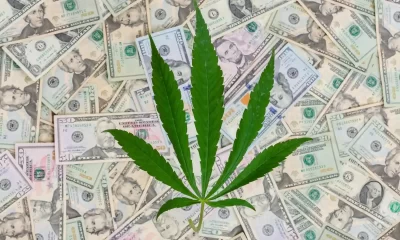
 Business2 years ago
Business2 years agoWashington State Pays Out $9.4 Million in Refunds Relating to Drug Convictions
-

 Business2 years ago
Business2 years agoMarijuana companies suing US attorney general in federal prohibition challenge
-

 Business2 years ago
Business2 years agoLegal Marijuana Handed A Nothing Burger From NY State
-

 Business2 years ago
Business2 years agoCan Cannabis Help Seasonal Depression
-

 Blogs2 years ago
Blogs2 years agoCannabis Art Is Flourishing On Etsy






